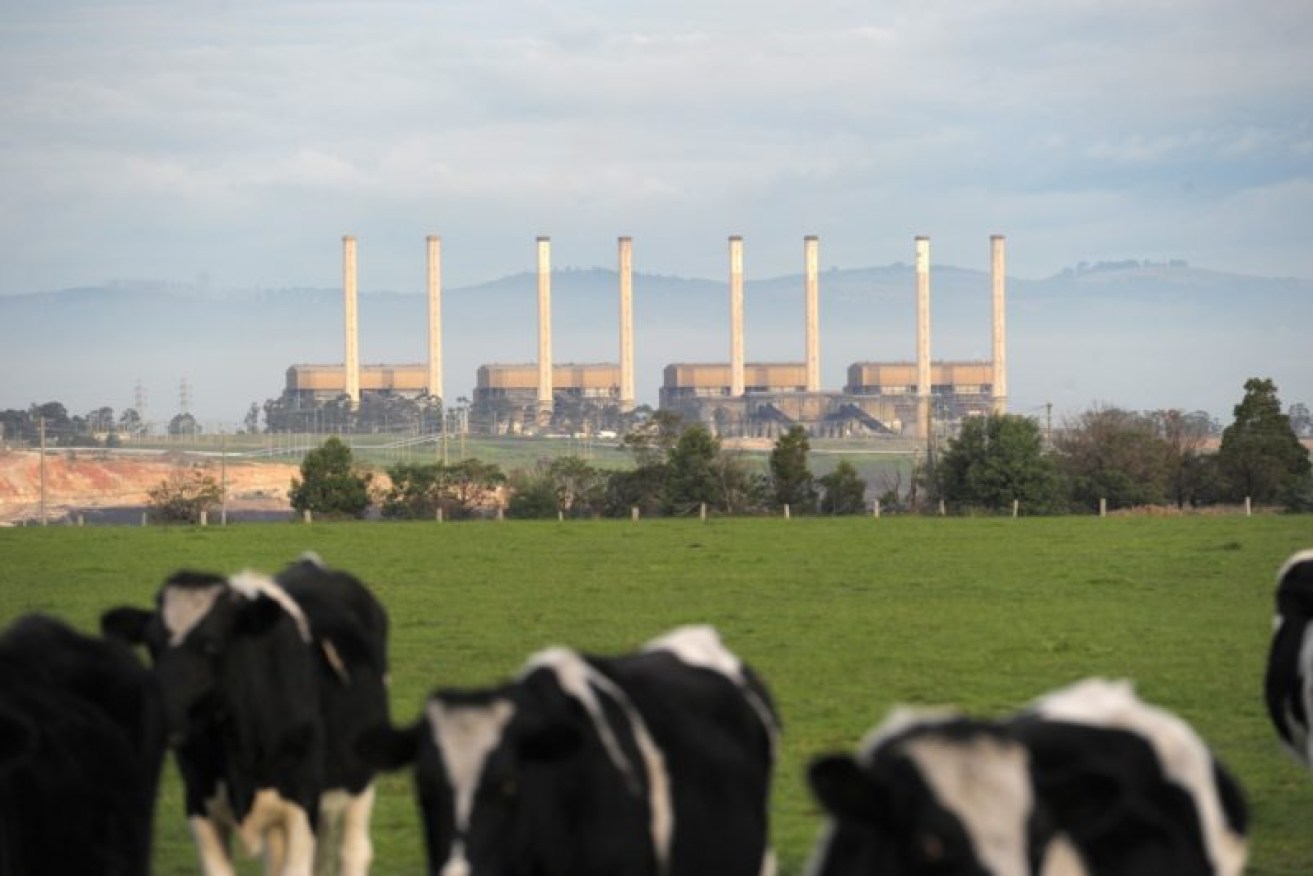Coal is on the skids but are we ready with alternatives?


The closure of Victoria's Hazelwood power station removed the state's single largest carbon emitter from the grid, but it also cut power supplies by more than 20 per cent. Photo: AAP
The imminent closure of Hazelwood power station shows that coal power is on the skids in Australia. The cheap energy source that once underpinned the economy is under attack, with renewables eating away at its profit margins and causing huge generators to close.
But governments and regulators are not prepared for its demise and consumers will have to pay the costs.
When Hazelwood, in Victoria’s Latrobe Valley, switches off its generators and cools its boilers for the last time in March 2017, it will bring the total of coal-fired generation closures to 5280 megawatts since 2012, or 11.7 per cent of Australia’s current generating capacity.
At the same time, output from renewables is ballooning, up 60 per cent to 15,200 gigawatts, or 14.6 per cent of power production, in 10 years.

Clean, green and growing. Source: Clean Energy Council
The demise of coal is being driven by a range of factors. One is a decline in energy consumption since the global financial crisis that no one predicted and has seen energy demand decline over three per cent since 2009.
That has been driven by industrial decline resulting from the closure of big manufacturers like the car industry and energy-intensive aluminium smelting.
Two big aluminium smelters, at Kurri Kurri in the Hunter Valley and Point Henry in Victoria, have closed in recent years and a third, at Portland in Victoria, is likely to follow when a $115 million state government subsidy ends this month. Portland alone uses 10 per cent of Victoria’s power supplies.
There’s also an age factor at play. French group ENGIE, Hazelwood’s owner, said it would “need to invest many hundreds of millions of dollars to ensure viable and most importantly, safe operation”.
The group also recently committed to exiting coal power, highlighting increasing unease of investors and consumers in relying on the greenhouse-polluting fuel.
The Coalition government has cut the mandated renewable energy target from 45,000 gigawatts in 2020 to 33,000, citing falling energy production as a driver.
Despite the reduced targets, renewables are eating away at the profitability of coal. Coal generators traditionally relied on price spikes in hot and cold weather to defray the costs of producing at low price times.
But wind and solar tend to kick in now at those times, a factor that “has taken the high profits away from coal”, said Tony Wood, energy director with the Grattan Institute. “What happens when you introduce new capacity with no marginal cost (as the wind is free) you depress the wholesale price.”
But as coal is knocked out of the market, renewables inexorably push up retail prices because consumers must pay the higher costs of renewable energy when its construction costs are factored in. This is especially true when the mandated usage of renewables grows.
“Whereas wind and solar might cost $100 per megawatt hour, coal might cost $50,” Mr Wood said. The effect of renewables knocking out coal might already be visible in the above graph with average wholesale prices moving from “$40 to $45 dollars to $50 to $55” in recent times, Mr Wood said.
While the move to renewables will not stop, there needs to be energy and planning put into making it successful, said John Connor, CEO of The Climate Institute. “The question is do we manage it with a comprehensive community and economic strategy.”

Renewables are a sunrise industry. Photo: AAP
The urgency of that issue grows by the day. NSW on Wednesday committed to move to zero net emissions by 2050, while Queensland and Victoria plan to move to 50 per cent and 40 per cent renewables 2030 and 2025 respectively.
As those renewable targets increase, coal will inexorably be pushed aside to be replaced by wind, solar and the rising reality of battery storage that will bring those technologies increased reliability. Gas plants will also have to be used at least in the interim until those technologies reach their combined potential.
But that all will require planning. “We’re operating with a 20th century power system which needs to be modified and changed,” said Kane Thornton, CEO of the Clean Energy Council. “It needs careful planning but that’s not an insurmountable challenge.”
Chief scientist Alan Finkel has been tasked to chair a Council of Australian Governments review into “developing a national electricity blueprint to ensure Australia’s energy security as we transition to a lower emissions future”, says Federal Energy Minister Josh Frydenberg.
But everything comes at a price and the move away from coal, with its unaccounted for environmental costs, will not in the short term at least, avoid price increases.
As the renewable energy target reaches its completion date in 2020, prices will rise further, Mr Wood says.









